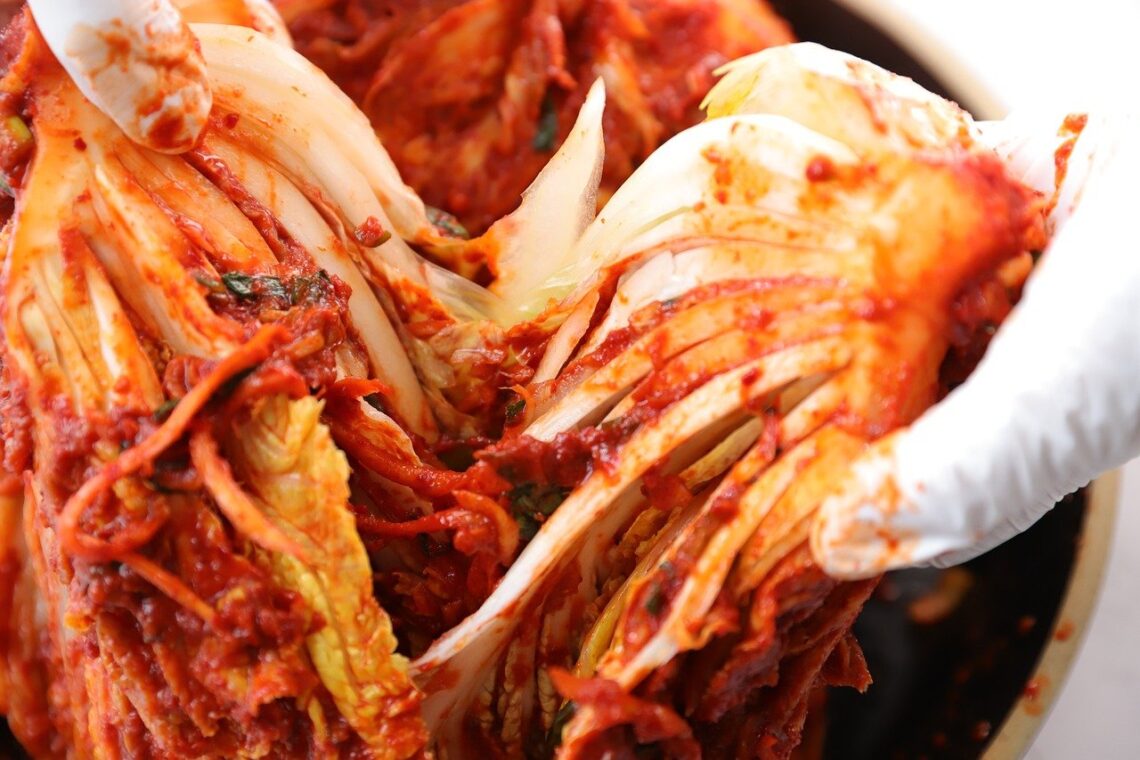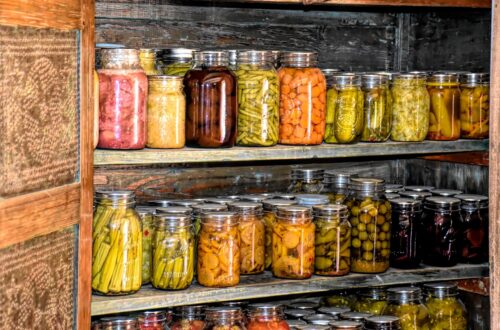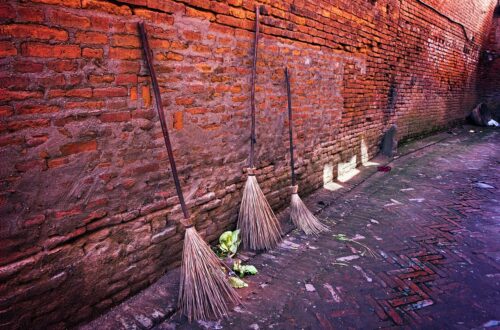Make organic kimchi from scratch using homegrown ingredients from your own kimchi garden!
While many foodies buy kimchi at the grocery store or order it at their favorite restaurant, kimchi is surprisingly easy to make at home and it’s a fun dish to try if you love eating fermented foods. Like sauerkraut, kimchi is made using a process known as lacto-fermentation, which is a relatively easy food preservation technique that doesn’t require a lot of supplies or ingredients. Even better, if you have a green thumb, you can grow most of the ingredients you need for kimchi in your garden and make a budget-friendly and flavorful organic kimchi from scratch!
Read on to discover what plants to grow for homemade kimchi, plus an easy step-by-step kimchi recipe that’s tangy, spicy, and oh-so-tasty!
Affiliate disclosure: As an Amazon Associate, I may earn commissions from qualifying purchases.
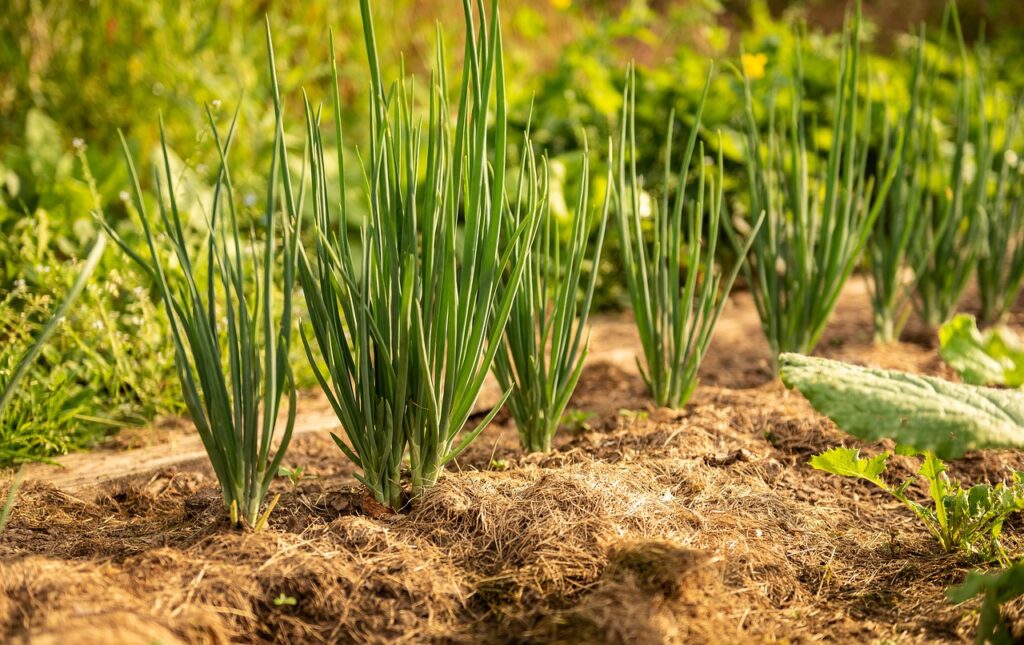
Keeping a Kimchi Garden
I love the idea of keeping themed food gardens. A salsa garden can contain all the ingredients you need for homemade salsa – like peppers, onions, tomatoes, and cilantro – while a pizza garden can be planted with your favorite veggie pizza toppings, plus tomatoes and garlic for homemade sauce. However, if you love kimchi, you can also grow a kimchi garden packed with the ingredients you need for different types of kimchi, such as:
- Napa or Michihili cabbage, and other types of cabbage or bok choy
- Pickling cucumbers
- Radishes, like ‘Korean’ radish, Daikon radish, or ‘Ponytail’ radish
- Onions and green onions
- Carrots
- Garlic
- Ginger
- Perilla or shiso
- Mustard greens
- Hot peppers (you can make your own chili flakes with a dehydrator!)
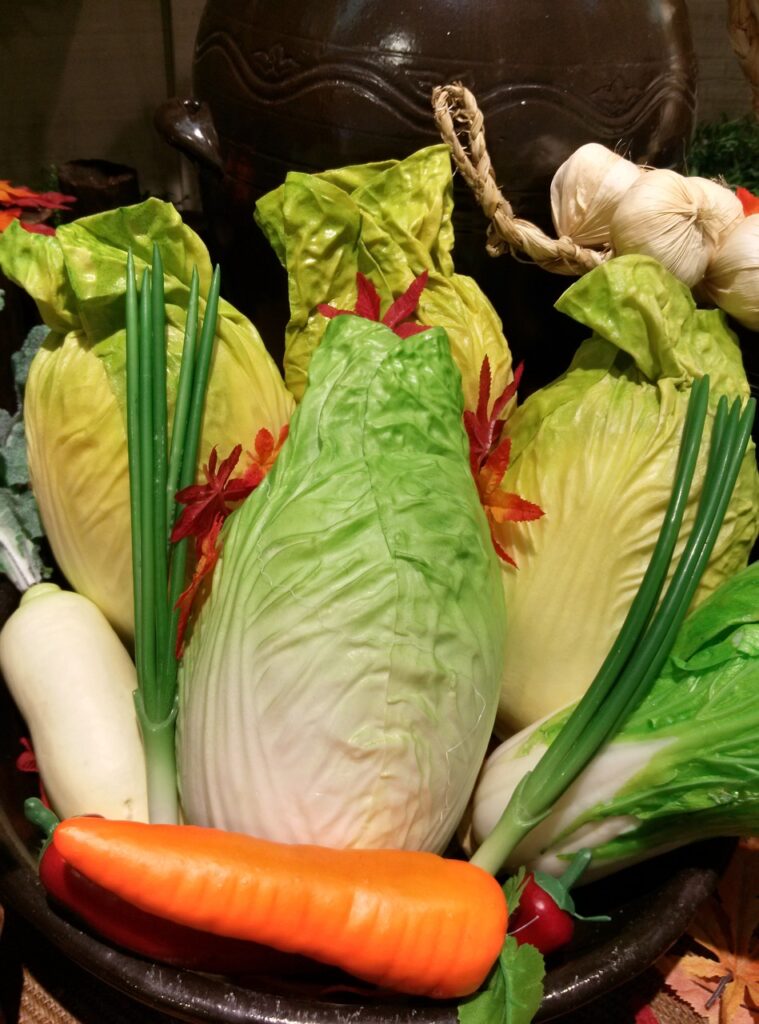
Best Cabbage Varieties for Homemade Kimchi
Chinese cabbages, like Michihili and Napa cabbage, are the most traditional types of cabbage used in classic Baechu-style kimchi. In fact, when most people talk about “kimchi,” they’re usually referring to a ferment specifically made with Chinese cabbage and a few other ingredients. That said, there’s no reason why you can’t use other types of cabbage in homemade kimchi and they’re actually lots of other kimchi varieties that don’t include Chinese cabbage at all (more on that later).
If you do decide to use a standard heading cabbage for kimchi making, your final kimchi may have a slightly different texture, but it will still taste delicious!
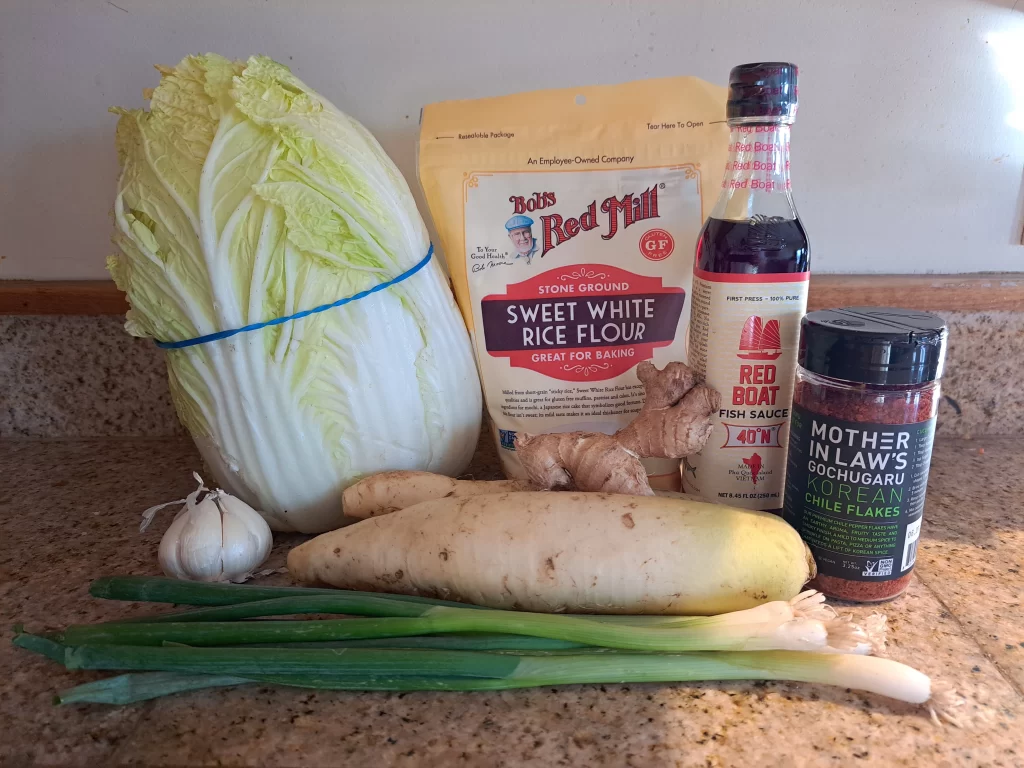
Making Organic Kimchi: Small Batch Kimchi Recipe
Kimchi is often made in large batches, but you can also scale back your kimchi making and make a small batch of kimchi that fits easily in the fridge. Here’s how!
What You’ll Need:
- Fermentation crock or half gallon canning jar, ideally with an airlock
- Fermentation weights or clean rocks or marbles sealed in a Ziploc bag
- Blender
- Gloves (optional)
- Large bowl, plate, and colander
- 2 pound head of Napa cabbage
- 1 daikon radish
- 4 scallions
- 3 garlic cloves
- Thumb-sized piece of ginger
- 1 to 5 tablespoons of Gochugaru chili flakes(depending on your heat tolerance). Or make your own chili flakes from homegrown hot peppers.
- ¼ cup non-iodized salt
- 1 tablespoon of soy sauce
- 1 tablespoon of fish sauce
- 1 teaspoon of sugar
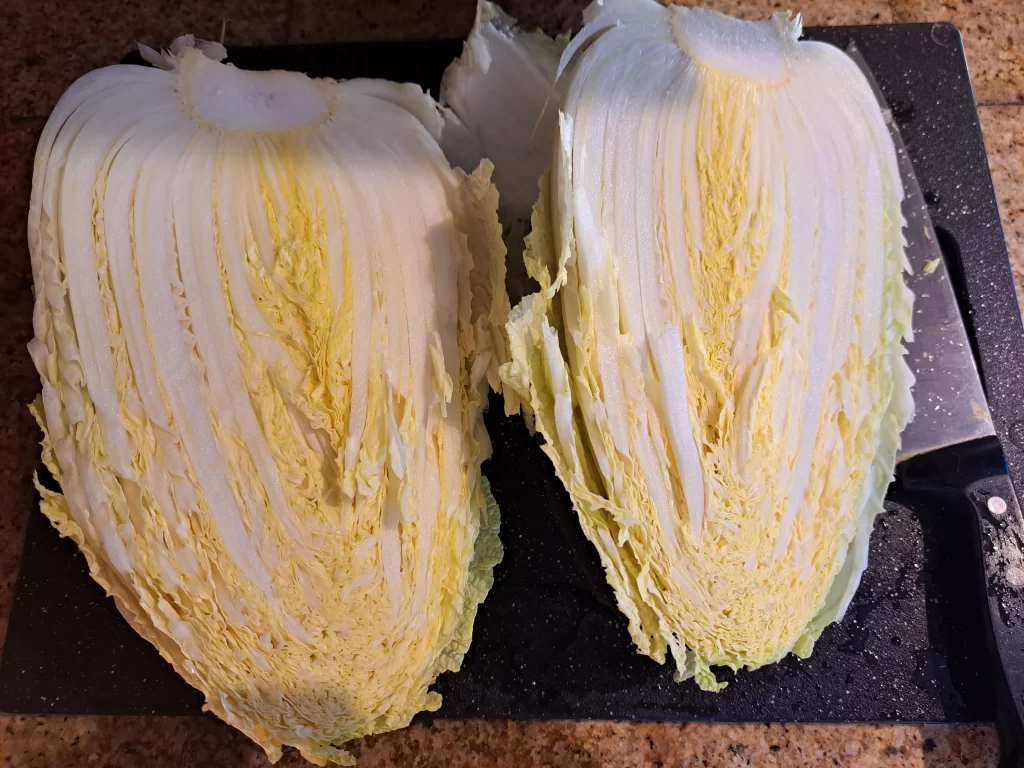
The Process:
1. Prep the cabbage.
Rinse the cabbage and remove the outer leaves. Cut the cabbage head into quarters, remove the core, and finely slice the leaves into 2-inch ribbons.
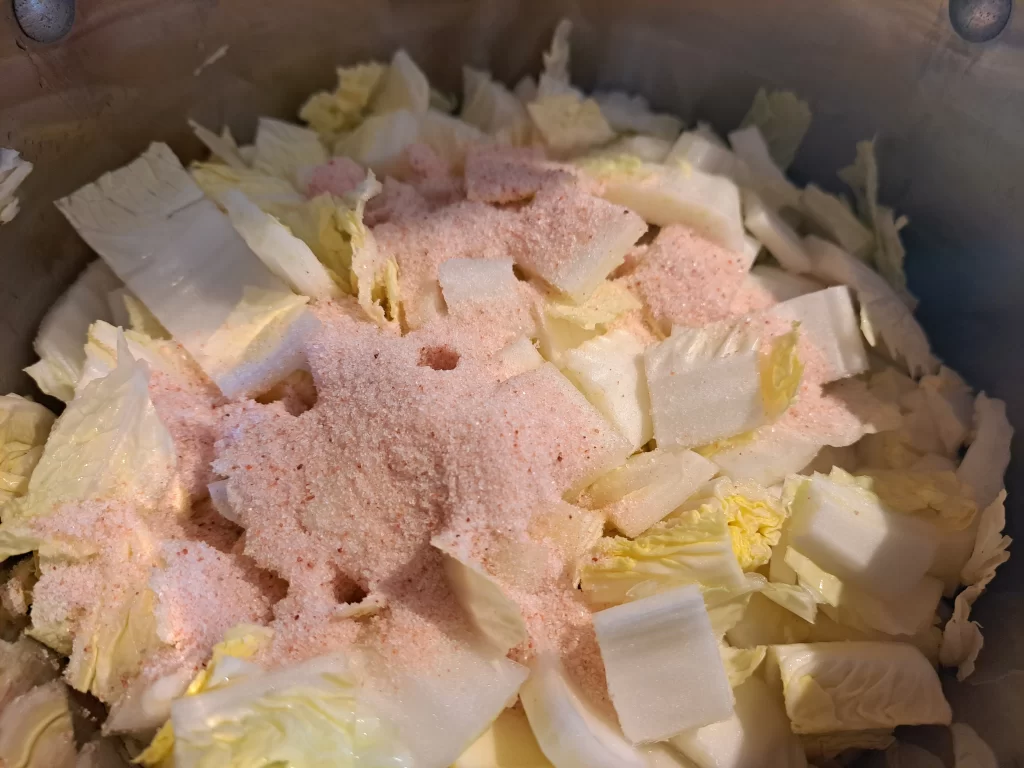
2. Add salt.
Place the cabbage and salt in the bowl and mix thoroughly to combine. Weigh the cabbage down with a heavy plate, fill the bowl with non-chlorinated water, and allow the cabbage to rest in the fridge for about 2 hours. This draws out excess moisture in the cabbage leaves and improves the texture.
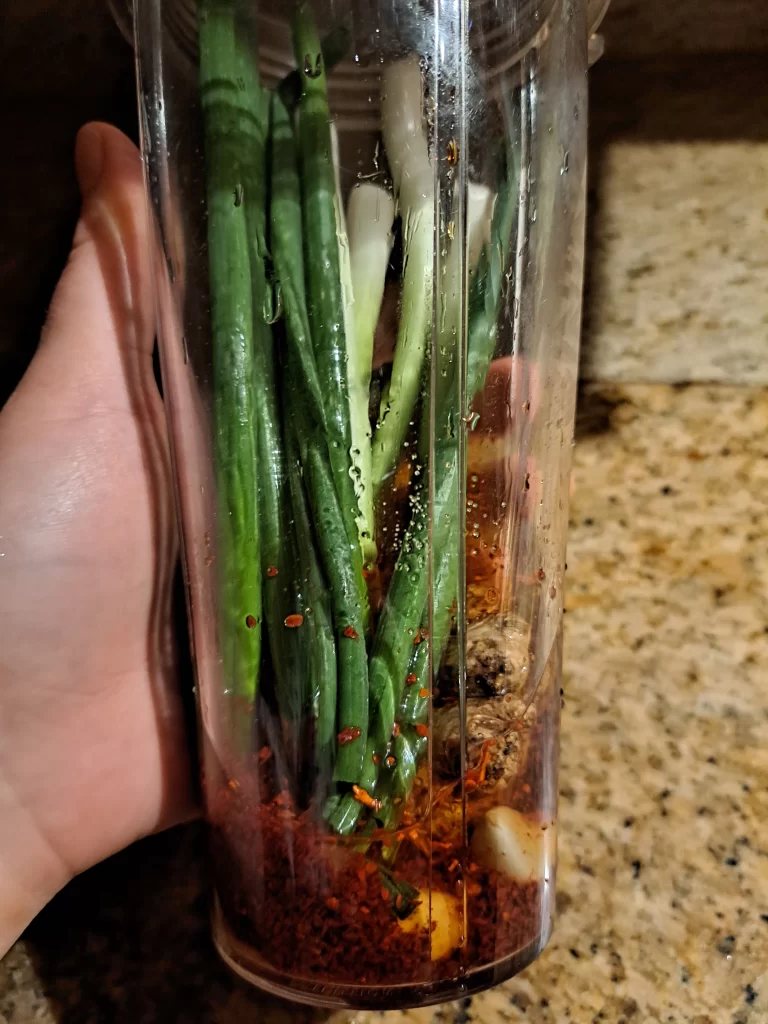
3. Drain.
Pour the cabbage into a colander and allow the salty brine to drain away. Rinse the cabbage thoroughly to remove excess salt and let it drip dry.
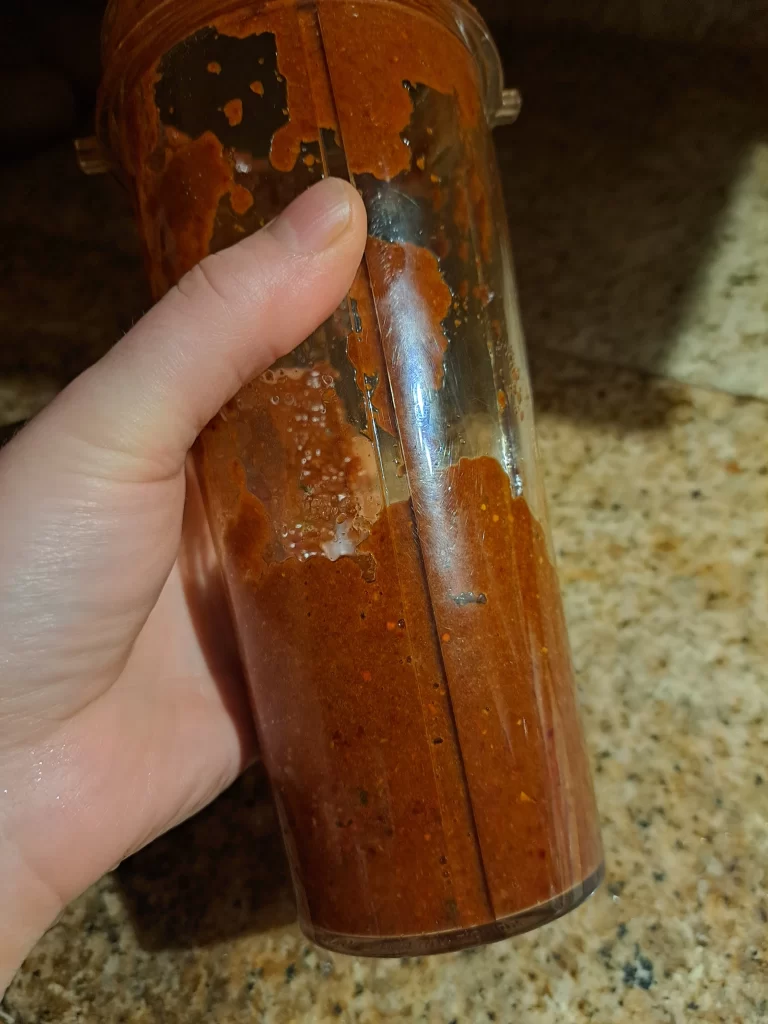
4. Make a paste.
While the cabbage is draining, add the remaining ingredients to a blender and blend into a smooth paste. Peel and chop the daikon radish into thin matchsticks.
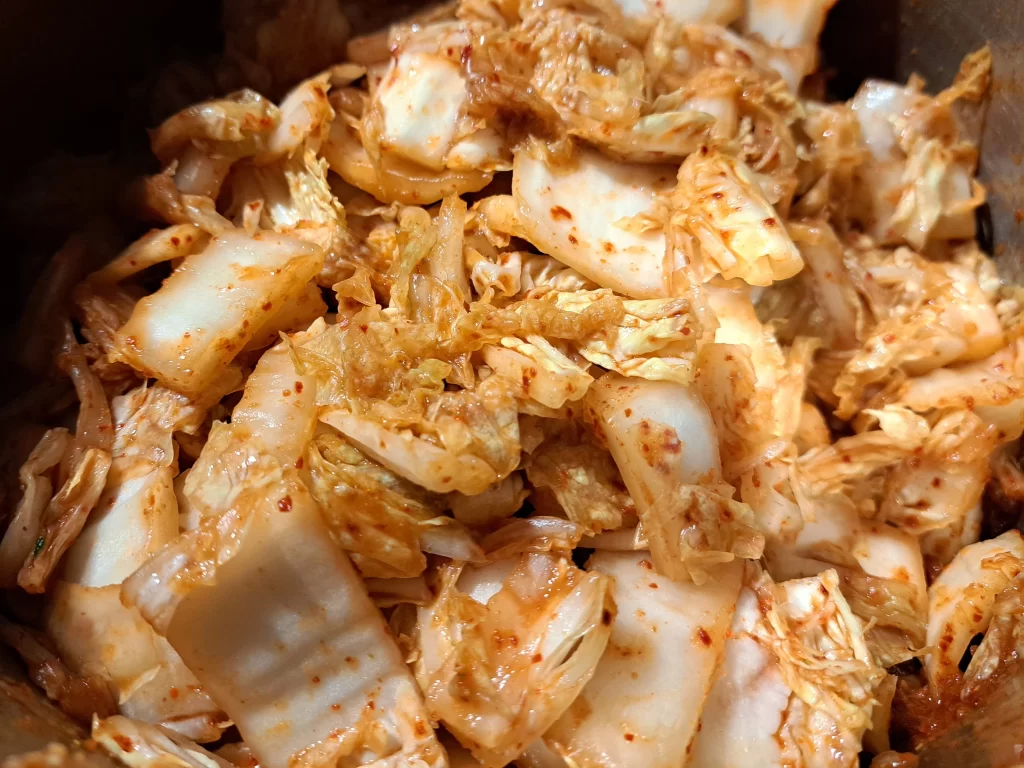
5. Combine.
Add the paste, radish, and shredded cabbage to the bowl and mix thoroughly with your hands. Squeeze the cabbage as you work to release moisture, but save this salty kimchi brine! This step can be a bit messy, so you may want to wear gloves.
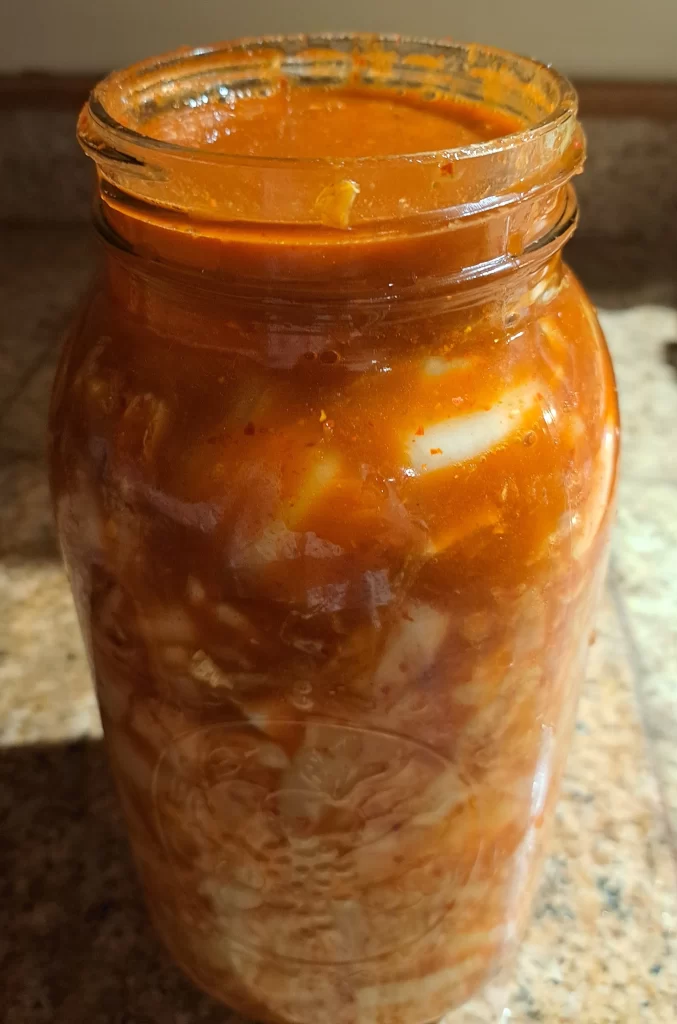
6. Fill crock.
Pack the cabbage mixture into a clean fermentation crock or jar, pressing down on the cabbage leaves to release air bubbles. Add weights on top of the cabbage and then pour in the kimchi brine, leaving about 1-inch of headspace.
In lacto-fermentation, the ingredients must be covered with brine at all times to prevent mold. If you don’t have enough brine, make more brine with a ratio of 1 teaspoon of salt for every 1 cup of water.
7. Ferment cabbage.
Cover the fermentation jar with a loose lid or a lid with an airlock. Remember to never tightly seal fermentation jars. The fermentation process releases gas, which can cause tightly sealed jars to explode!
Place the fermentation jar or crock on a plate to catch overflow and move the jar into a warm, dark spot (like under a kitchen cabinet). Let the kimchi fermentation jar marinate for 1 to 5 days, tasting the cabbage daily until it’s perfectly tangy. Once the cabbage has developed that classic kimchi flavor, move the jar into your fridge to slow down the fermentation process.
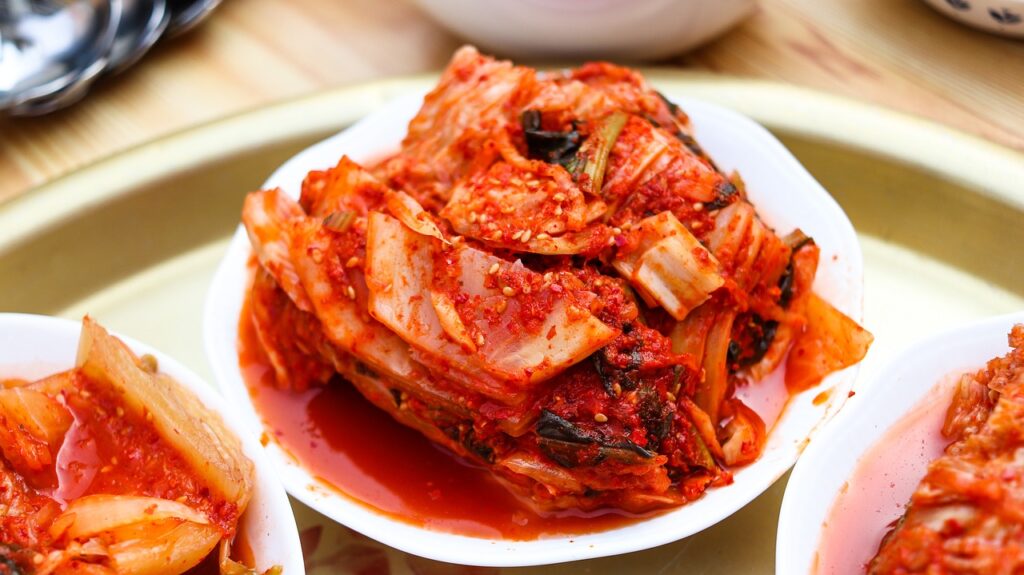
How Long Does Kimchi Last?
In general, kimchi is stored in the fridge, where it stays fresh for months. Kimchi can be enjoyed immediately after it finishes fermenting, but the flavor will continue to develop over time… even in the fridge! For longer term storage, kimchi can also be processed with water bath canning; however, this is not ideal since heat kills off the probiotics in canned kimchi.
I personally like eating kimchi as a snack or omelet topping, but you can also serve kimchi with noodles, rice, fried rice, soup, tofu, burgers, and tons of other dishes!
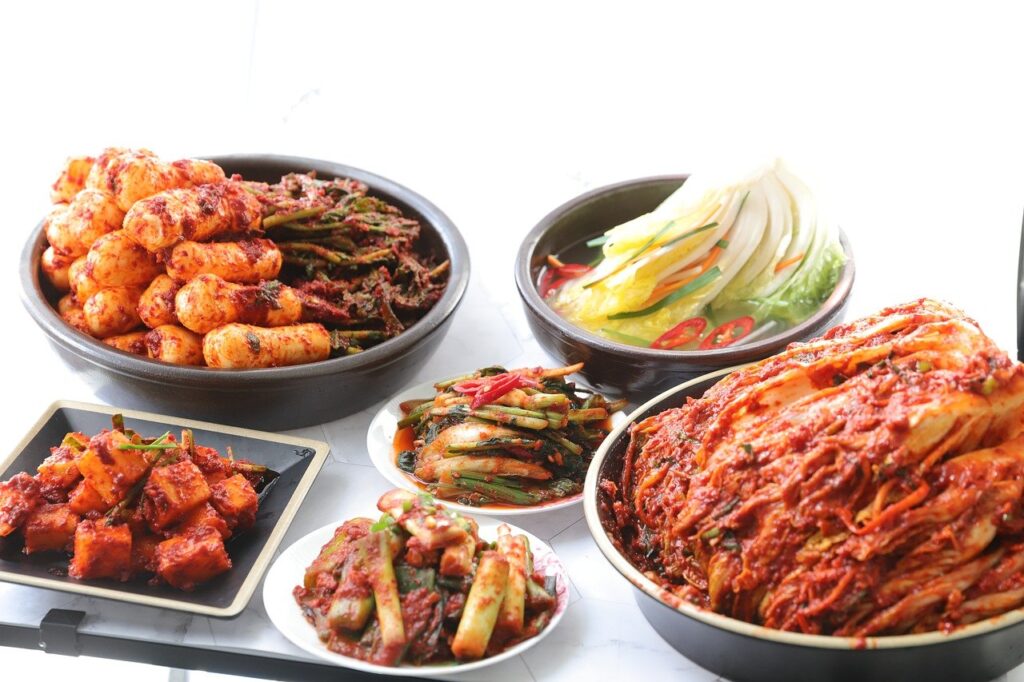
Other Kimchi Varieties to Try
Made of Napa cabbage, chili flakes and other flavor-packed ingredients, Baechu-style kimchi is the most classic kimchi variety. But if love kimchi, there are other types of kimchi to try, including:
- Cucumber kimchi
- Radish kimchi
- Perilla leaf kimchi (also known as Shiso)
- Green onion kimchi
- Mustard leaf kimchi
- White kimchi (a good choice if you don’t like lots of heat, this kimchi forgoes the chili flakes!)

Frequently Asked Questions About Making Kimchi
What’s the difference between kimchi and sauerkraut?
Kimchi and sauerkraut are quite similar – they’re both made with lacto-fermented cabbage! However, these two ferments use different spices and sauerkraut is fermented much longer than kimchi. Most noticeably, sauerkraut is usually not spicy, while kimchi packs some heat!
How is kimchi made traditionally?
Traditionally, kimchi was made in earthenware pots, or Onggi, that were buried in the soil. This was an effective way to preserve food harvests and keep crops from going to waste.
Do you eat kimchi hot or cold?
Kimchi can be served hot or cold, depending on your taste preferences. Just keep in mind that high heat kills the probiotics in kimchi and other fermented foods.
